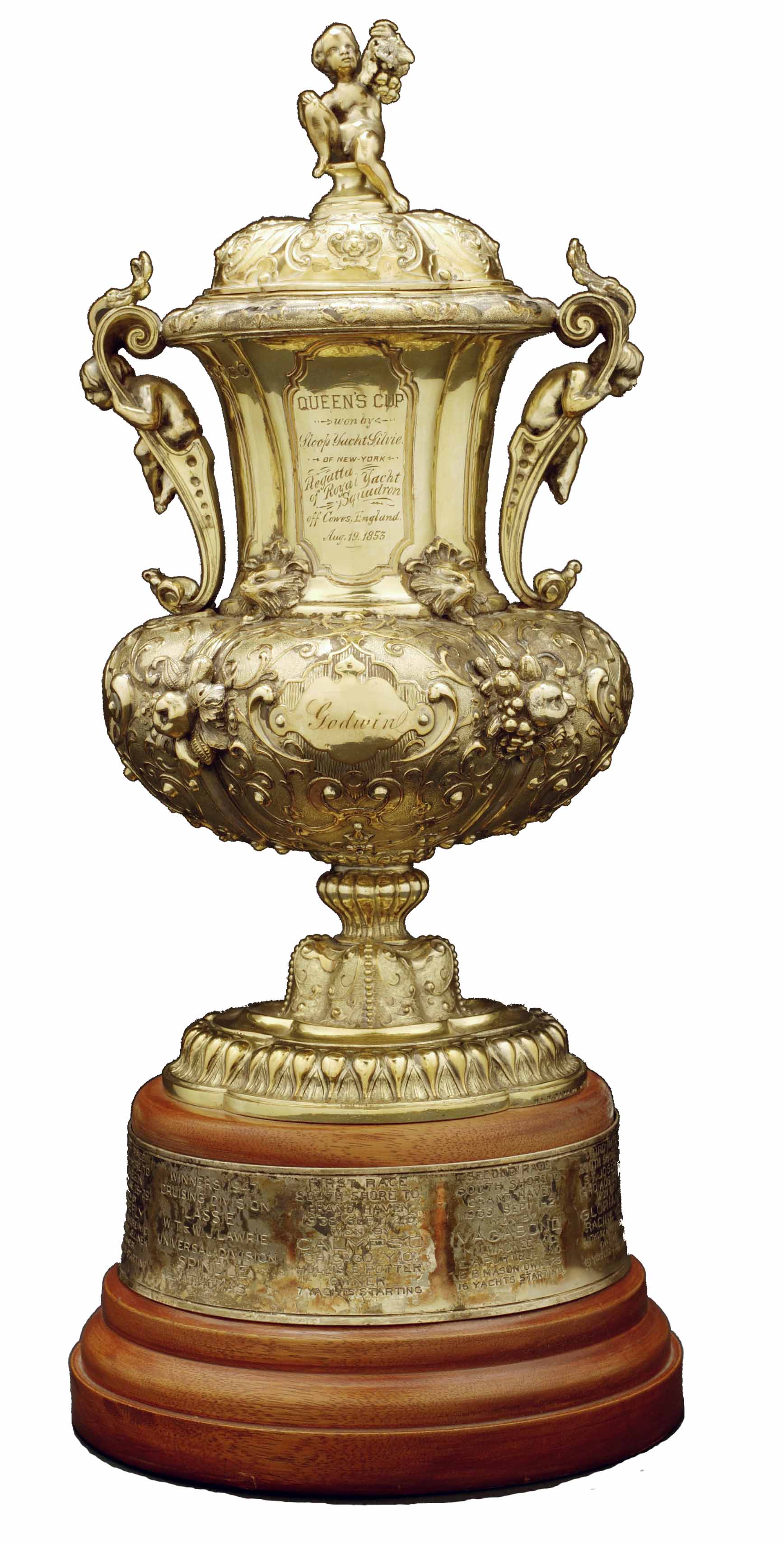A Proud Heritage
History of the Queen's Cup ®
The Queen's Cup® Trophy is one of the oldest cups in world yachting still offered for competition every year. Its history dates back to an age when both British Victorian silverwork and sailing yachts were without rival anywhere.
 American shipyards of this era were turning out very fast sailing vessels called clipper ships. These craft were extreme designs built to out-perform the fast new breed of ships powered by steam. The American racing sloop Silvie was built during this era using this radical new technology.
American shipyards of this era were turning out very fast sailing vessels called clipper ships. These craft were extreme designs built to out-perform the fast new breed of ships powered by steam. The American racing sloop Silvie was built during this era using this radical new technology.
On August 19, 1853, she won second place in a regatta scheduled by the Royal Yacht Squadron that was raced off Cowes, England.
First prize - a cup valued at 100 guineas - was won by the English yacht Gaily, six minutes and 38 seconds ahead of Silvie. This outstanding performance led the squadron to award a special prize to her, a 50-guinea cup, now known as the Queen's Cup.
Actually, it is not really a Queen's Cup, because only English yachts are allowed to win a cup offered by the Queen. Races in which foreign yachts competed were sailed either before or after those races in which English yachts competed.
The cup was brought back to the New York Yacht Club, Silvia's home port, and went into obscurity until 1874, when a Mr. J.H. Godwin, of Kingsbridge, New York, gave the cup to his friend Kirkland C. Barker, commodore of the International Yacht Club of Detroit. The cup was to be offered as an international challenge called the Godwin Cup.
But as it turned out there was only one challenge, Annie Cuthbert of Hamilton, Ontario. Barker's yacht Cora won the first race, with the Canadians winning the second but forfeiting the final race. This gave Barker his victory but left very strained relations between the Detroit and Hamilton yachtsmen. The cup was never offered for competition again, probably due to the untimely death of Commodore Barker. He and two other crew members drowned while shifting ballast in Cora in preparation for the 1875 racing season.
Nothing more is known about the cup until about the turn of the century, when a young lad, while cleaning out a family storeroom, discovered an exquisite rosewood box holding the cup. The lad was Walter Hull, whose father was Charles Hull, son-in-law of Commodore Barker, to whom the cup had been given.
Walter Hull treasured the cup for the rest of his life and kept it in his possession until September 1, 1938. At that time his good friend William Lawrie (later Commodore of South Shore Yacht Club in 1944) persuaded him to deed it to South Shore Yacht Club, "for an annual race across Lake Michigan, always starting off South Shore Yacht Club, and ending at a point in Michigan, open to all yachts of a recognized yacht club on the Great Lakes."
In early years the cup was awarded according the Universal Fleet Rule that dominated early racing on Lake Michigan. The first race was sailed to Spring Lake, Michigan, and won by the R- boat Calypso, owned by Dr. Hollis Potter of the Chicago Yacht Club. In later years the Universal system became less popular, and the number of cruising-type boats increased. The South Shore Yacht Club Race Committee decided to award the cup alternately to the different cruising fleets.
The age of the cup is authenticated by the traditional markings found on it, five in number: silversmith's trademark, standard mark, town mark, date mark and duty mark. These marks reveal that the cup was crafted by the silversmith firm of Robert Garrard, 29 Panton Street, St. Martins, England, in 1847-1848. The lion's head standard mark denotes the minimum sterling silver content is 92.5 percent; only the Britannia standard mark is of higher minimum silver content.
We are very proud of the Queen's Cup, and pleased to continue the fine yachting spirit started by Walter C. Hull more than 75 years ago.
